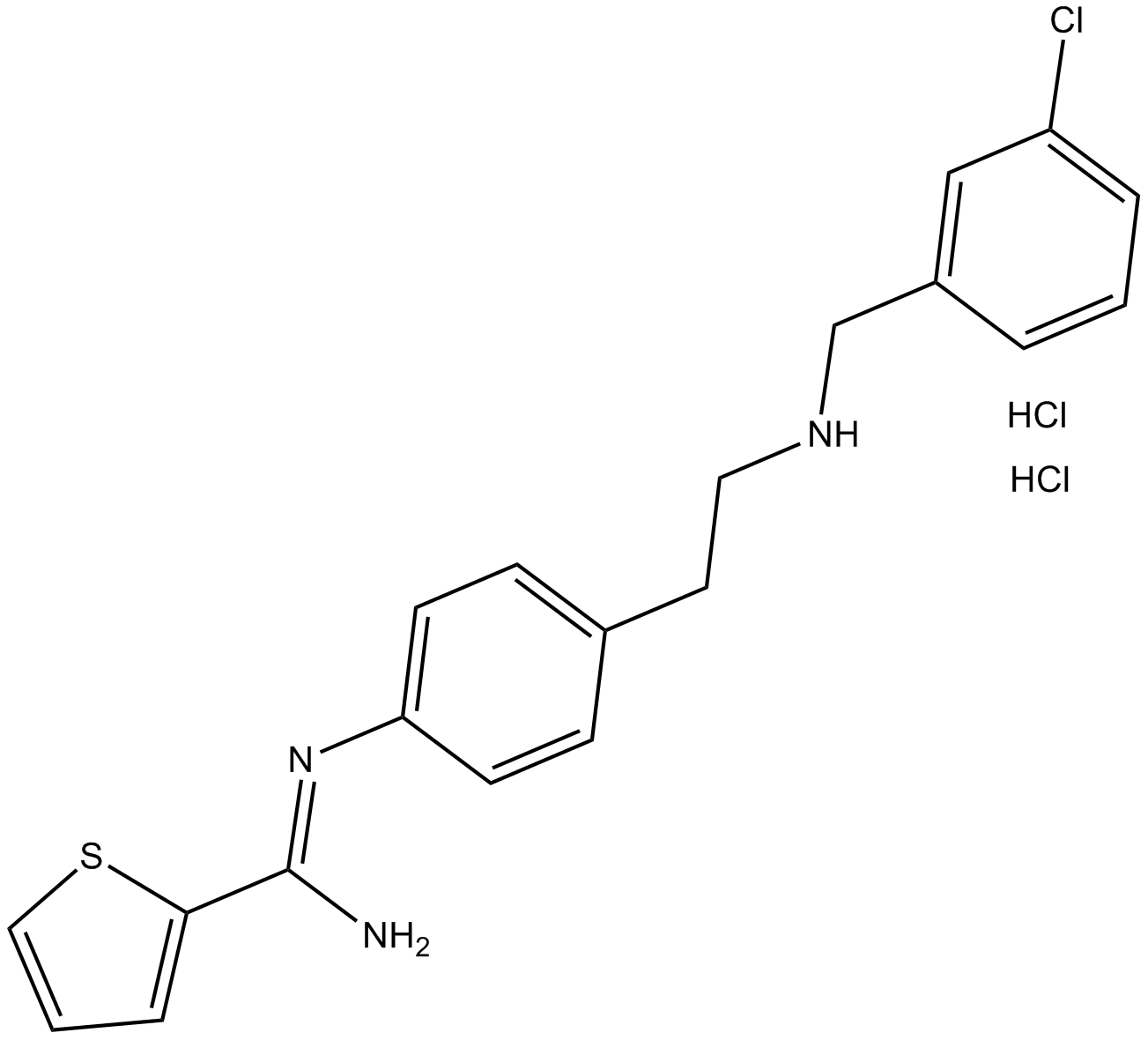ARL 17477 dihydrochloride |
| Catalog No.GC14802 |
Selective nNOS inhibitor
Products are for research use only. Not for human use. We do not sell to patients.

Cas No.: 866914-87-6
Sample solution is provided at 25 µL, 10mM.
ARL 17477 dihydrochloride is a selective and potent neuronal nitrogen oxide synthase (nNOS) inhibitor with IC50 values of 1 and 17μM for nNOS and endothelial NOS, respectively [1].
Neuronal NOS (nNOS) plays an important role in the development of ischaemic brain necrosis while endothelial NOS (eNOS) protects brain tissue through increasing ischaemic regional cerebral blood flow [1].
In rats after transient MCA occlusion, ARL 17477 (1mg/kg, 3mg/kg and 10mg/kg) reduced ischemic infarct volume by 53%, 23% and 6.5% respectively in a dose-dependent way. ARL 17477 (10 mg/kg) significantly reduced regional cerebral blood flow (rCBF) by 27±5.3% and 24±14.08%. Also, it reduced cortical NOS activity by 86±14.9% and 91±8.9% at 10 min or 3 h, respectively [2]. In the global cerebral ischaemia gerbil model, the combination of MK-801 with ARL 17477 provided 44% greater protection than the total protection or either alone. Likewise, the combination of LY293558 with ARL 17477 provided 35% greater protection than total protection of either compound alone [3].
References:
[1]. O'Neill MJ, Murray TK, McCarty DR, et al. ARL 17477, a selective nitric oxide synthase inhibitor, with neuroprotective effects in animal models of global and focal cerebral ischaemia. Brain Res, 2000, 871(2): 234-244.
[2]. Zhang ZG, Reif D, Macdonald J, et al. ARL 17477, a potent and selective neuronal NOS inhibitor decreases infarct volume after transient middle cerebral artery occlusion in rats. J Cereb Blood Flow Metab, 1996, 16(4): 599-604.
[3]. Hicks CA, Ward MA, Swettenham JB, et al. Synergistic neuroprotective effects by combining an NMDA or AMPA receptor antagonist with nitric oxide synthase inhibitors in global cerebral ischaemia. Eur J Pharmacol, 1999, 381(2-3): 113-119.
Average Rating: 5 (Based on Reviews and 23 reference(s) in Google Scholar.)
GLPBIO products are for RESEARCH USE ONLY. Please make sure your review or question is research based.
Required fields are marked with *




















